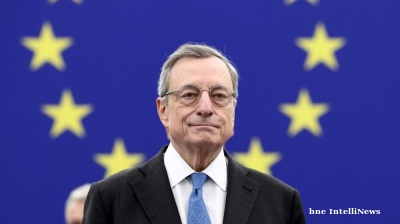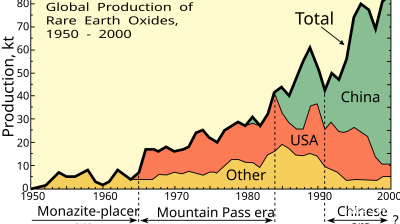Bankers and investors are nervously watching Russia’s interbank interest rates for a spike that would foreshadow the start of a banking crisis. While rates have risen in recent days, they are not yet at the levels that would ring alarm bells, Capital Economics’ senior analyst Jason Turvey said in a note on March 2.
The spread of Russian interbank interest rates over the central bank’s policy rate, which was doubled to an emergency 20% on February 28, has already widened pointing to some stress in the banking sector, Capital Economics reported in a note on March 2.
“But for now it is far from the levels recorded during 2008/09 and 2014/15. A key risk is that the plunge in Russian asset prices, together with fears of counterparty risk, cause interbank lending to freeze and rates to spike. This has often been a precursor to banking crises and so the interbank rate will be a key indicator to watch,” Turvey said in a note.
In normal circumstances, the interbank rates track the central bank’s policy rate but in times of crisis that relationship can break down. The sharp increase in the central bank’s overnight rate is already visible in the interbank rates, but Turvey reports that the spread between the market and the CBR rates has not blown up yet.
“During the global financial crisis and again in early 2015 during the ruble crisis, overnight interbank rates spiked to around 1,000-1,500bp above the central bank’s policy rate,” Turvey reports. “For now, though, we’re not seeing the same kind of stress in the banking sector as in 2008/09 or in 2015. So far, overnight interbank rates have jumped to 21.3%, which mostly reflects the increase in the CBR’s policy rate from 9.50% to 20.00% on Monday. The spread between interbank rates and the policy rate has widened, but not significantly – from around zero in mid-February to 130bp now.”
As bne IntelliNews reported, Russia’s banking sector is facing a shortage of dollars thanks to a mismatch of dollar assets and liabilities, and both the state-owned banking giants VTB Bank and Sber (formerly known as Sberbank), which together account for half of Russia’s deposits and have both been singled by the recent SWIFT sanctions, have long lines at their ATMs as regular Russians try to withdraw their savings.
FX deposits declined at the year end in 2021, which is a season effect. In November-December both retail and corporate funding were together down 2.4%, at $91.7bn and $167.4bn respectively, the CBR reports. Overall, FX funding increased in 2021: by 4.3% for the aggregate portfolio, 0.9% for retail and 6.3% for corporates.
Now the crisis has struck and in an effort to prevent a run on the banks that could destablise the entire banking sector, the Central Bank of Russia (CBR) has already announced a series of restrictions on withdrawals and other measures to inject more liquidity into the system on March 1:
- A special order on transactions between residents and non-residents related to loans, property, securities starting from today.
- The approval of a government commission for transactions.
- The approval of CBR and the Ministry of Finance for transactions involving exchange-traded securities.
- An exemption for transactions with the government, CBR and other state bodies.
- Allowing credit institutions to transfer funds to non-resident credit institutions for approved transactions.
- A $10,000 limit on the amount of cash allowed to be taken out of the country.
Over the last several days, CBR has announced a range of support measures for the Russian banking sector, including:
• A recommendation to postpone dividend and management bonus payments. This recommendation becomes a mandatory requirement if a bank’s capital adequacy ratio falls below the regulatory minimum, including capital buffers.
• The lifting of caps on consumer loan interest rates until 30 June.
• The permanent release of extra capital buffers on corporate loans in FX as well as on all consumer loans and mortgages starting today. Such buffers amounted to RUB 891bn for the whole banking sector as of 1 February.
• The lifting of limits on the open positions of Russian banks in foreign currencies and precious metals until 1 July following the announcement of the EU’s plans to “freeze” CBR's transactions and "paralyze" its assets. This lifting of limits should only apply to the breach of the current limits caused by “external circumstances” rather than banks' speculative activities.
• The easing of a range of regulations that determine the size of loan loss provisions in RAS accounts.
In the meantime, many of Russia’s 370 banks have turned to the interbank market, which is the main source of liquidity for Russia’s smaller banks. Banks make money from the cash they hold to cover withdrawals by lending it to each other and so manage their liquidity needs. However, in times of crisis banks worry their counterparties will go bust and rates spike before the market seizes up, send those banks with insufficient liquidity when the music stops to the wall.
One of the problems that could send the interbank rates soaring is a sharp fall in asset prices. On March 2 the value of Sber’ stock plummeted by 95%, with the price of its ADRs listed on the London Stock Exchange (LSE) falling to $0.01.
“Sharp asset price falls can reduce the amount of collateral available for interbank lending. And rising concerns over counterparty risk (that is, the risk that another party involved in a transaction cannot fulfil its obligations) can cause lending between financial institutions to slow. All of this can cause interbank markets to freeze up and interbank rates to spike,” Turvey warned.
Investors will be watching closely. The CBR reported in 2018 it has $31bn in cash in its own coffers and on deposit at correspondent banks but has stopped reporting this number since. However, this cash is not exposed to the SWIFT sanctions, as it is held in Russia.
In its latest monthly update in February the CBR reported that liquidity in the banking sector was at a comfortable level, but since the sanctions were imposed the situation has been dramatically altered.
“The total volume of ruble liquid assets (cash, claims on the [Central] Bank [of] Russia and unpledged market collateral) decreased in January by RUB0.9 trillion, to RUB16.4 trillion, but still significantly exceeds the average volume for 2021 (RUB15.6bn),” the CBR said in its February report.
“The January decline is due mainly [to] the outflows of funds of individuals described above. Nevertheless, the volume of liquidity is at a comfortable level, sufficient to cover 30% of total customer funds in rubles,” the CBR reported. “About another RUB4.6 trillion, sufficient to cover 8% of customer funds, banks can borrow from the Bank of Russia secured by non-marketable assets (loans that meet the requirements of the Bank of Russia).”
The CBR added that the volume of liquid assets of credit institutions in foreign currency increased to RUB53.5bn from $45bn (due to the growth of foreign exchange funding) after the traditional falling in December, exceeding the average level of 2021.
“At the same time, the level of coverage of clients' foreign currency funds and foreign currency liabilities increased to 21% and 15% respectively, from 18% and 13%, which is in line with the average level of the previous year,” the CBR added.
While this is a comfortable buffer in normal times, with the sudden surge in demand for cash by the population and especially for dollars, banks are burning through these buffers fast.
The small spreads between the overnight rate and the market rates suggest that the CBR intervention so far has been effective at stabilising the banks.
As well as hiking its policy rate, the CBR broadened collateral requirements and adjusted provisioning requirements, and Finance Minister Siluanov has spoken about recapitalising banks (Russia’s fiscal position affords space to do so).
The banking sector was maintaining a capital adequacy ratio (CAR) – the amount of cash banks hold to cover withdrawal demands – of 12.26% in January, which is ahead of the 10% mandatory minimum, but is still down from the 20% emerging market banks usually like to hold to deal with volatility. However, as volatility is now extreme, a CAR of 12.2% looks like a much thinner margin.
“The balance sheet capital of the sector, despite receiving a net profit of RUB164bn, decreased by RUB159bn to RUB11.8 trillion, due to the negative revaluation of securities valued through other comprehensive income (-RUB201bn), and adjustments to profits from previous years taking into account events after the reporting date (about RUB125bn),” the CBR said in its last update. “The total capital adequacy ratio slightly increased in December to the level of 12.26%, mainly due to earned profit and the growth of subordinated capital instruments, as a result of which the capital growth rate outpaced the growth rate of risk-weighted assets.”
Although on balance the banking sector remains stable and has sufficient liquidity, it is clearly being stressed by the current crisis. The CBR’s resources are also likely to be called into play, which the regulator is trying to head off by introducing the restrictions it has on March 1.
“The risk of a freeze in the interbank market shouldn’t be dismissed. One route to such an outcome is if the West ratchets up sanctions even further, most clearly by shutting off energy imports from Russia. A frozen interbank market would pose a serious issue for banks that are reliant on short-term wholesale funding. These institutions would face perilous liquidity problems and may begin to default on some of their liabilities, in turn sparking broader stress in the financial system and a dramatic tightening of credit conditions that makes the downturn in the economy even worse,” Turvey warned.
“It is nigh on impossible to predict how things will play out in the coming days and weeks but we will paying close attention to interbank rates to assess how risks in the banking sector are playing out. Even if interbank markets avoid freezing up, the sharp rise in interest rates already points to a painful credit crunch,” Turvey concluded.
Features

US expands oil sanctions on Russia
US President Donald Trump imposed his first sanctions on Russia’s two largest oil companies on October 22, the state-owned Rosneft and the privately-owned Lukoil in the latest flip flop by the US president.

Draghi urges ‘pragmatic federalism’ as EU faces defeat in Ukraine and economic crises
The European Union must embrace “pragmatic federalism” to respond to mounting global and internal challenges, said former Italian prime minister Mario Draghi of Europe’s failure to face an accelerating slide into irrelevance.

US denies negotiating with China over Taiwan, as Beijing presses for reunification
Marco Rubio, the US Secretary of State, told reporters that the administration of Donald Trump is not contemplating any agreement that would compromise Taiwan’s status.

Asian economies weigh their options amid fears of over-reliance on Chinese rare-earths
Just how control over these critical minerals plays out will be a long fought battle lasting decades, and one that will increasingly define Asia’s industrial future.



